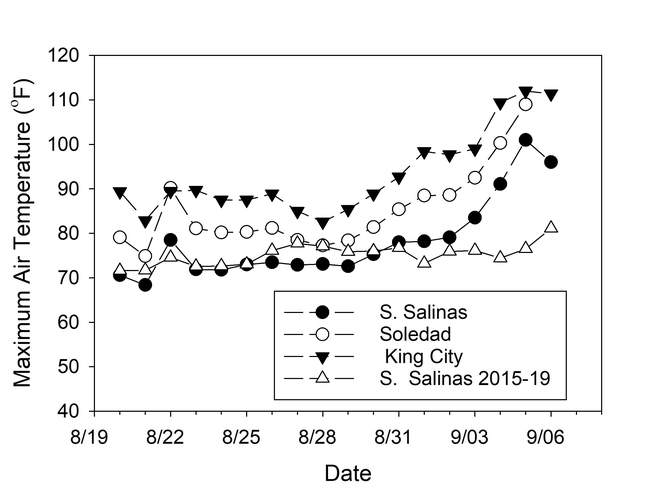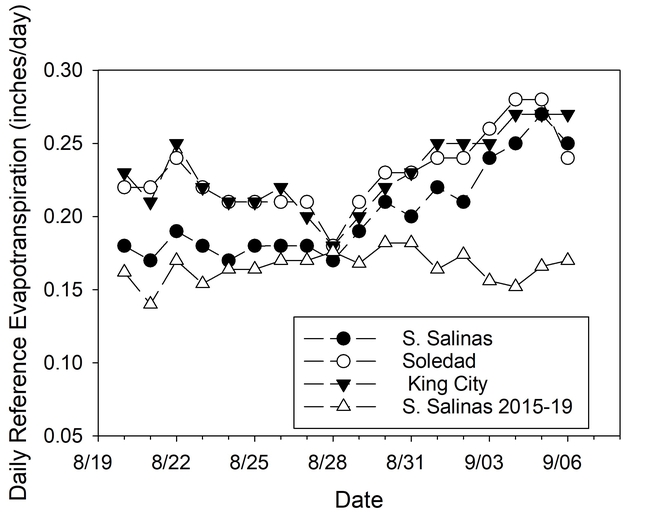Once again, we are experiencing a prolonged heat wave in the Salinas Valley. Maximum air temperature in the King City area reached 112 °F earlier in the week (Fig. 1). Recent maximum air temperatures in South Salinas have been far greater than the average temperatures recorded for the same period during previous years (2015 through 2019).
Although this heat wave will probably wane in the next several days, the central coast region will likely experience periods of record setting temperatures in the future. There are several concerns about how prolonged elevated temperatures affect cool season vegetables. Heat can cause immediate damage to plant tissue when temperatures of the plant surfaces become too high and cause cells to die (Fig. 2). In addition, sustained high temperatures can affect plant growth and development. For instance, in lettuce damage can vary from obvious burning on the edges of leaves from too much heat load (Fig. 3) to more physiological issues that result in poor head formation in iceberg (e.g. puffy heads). In broccoli, if heat damage occurs when heads are forming, it can result in uneven bead sizes when the head matures (Fig. 4). Excessive heat can result in wilting in cauliflower (Fig. 5) during high temperatures and expose curds to sunburning or cause discoloring (Fig. 6.) In the past two years, we have observed that excessive heat can stress lettuce plants and make them more susceptible to infection with Pythium Wilt (Pythium uncinulatum). That was particularly evident in the 2020 heat spells. If there is inoculum Pythium Wilt in the soil, stress caused by heat on the plant can set off infection (Fig. 7).
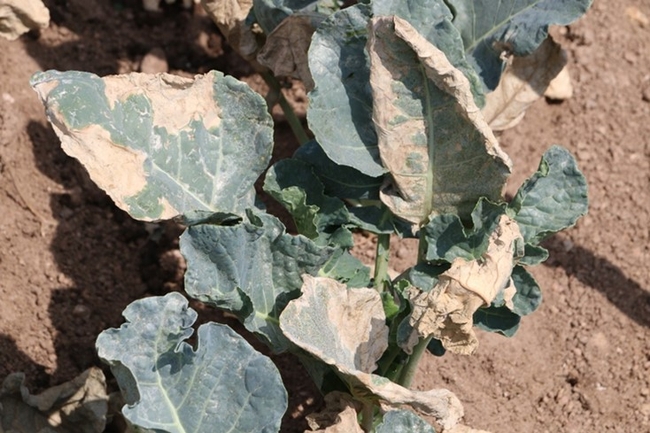
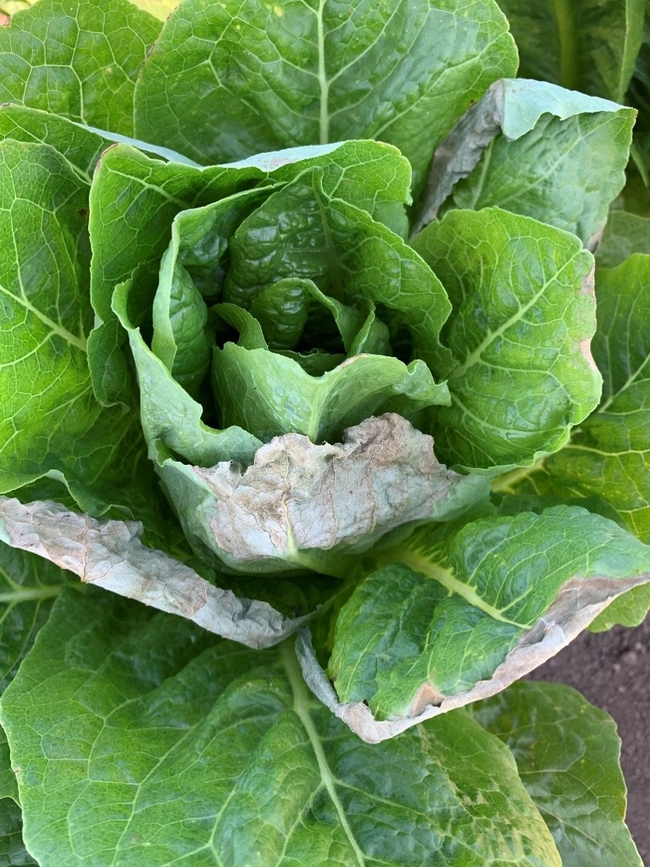
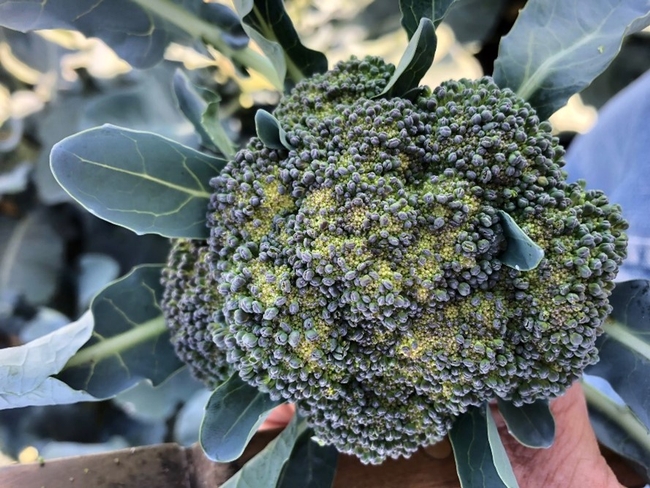
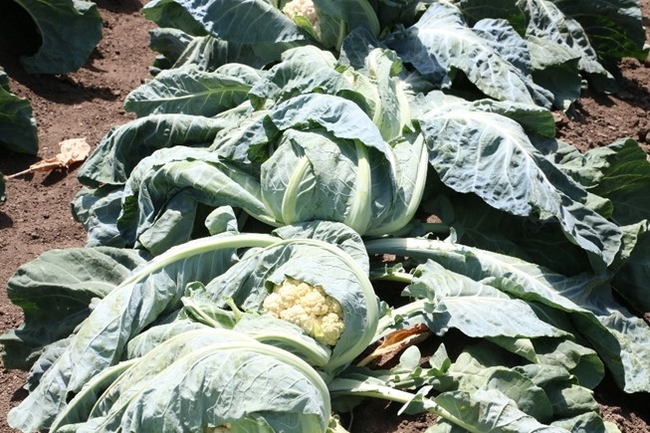
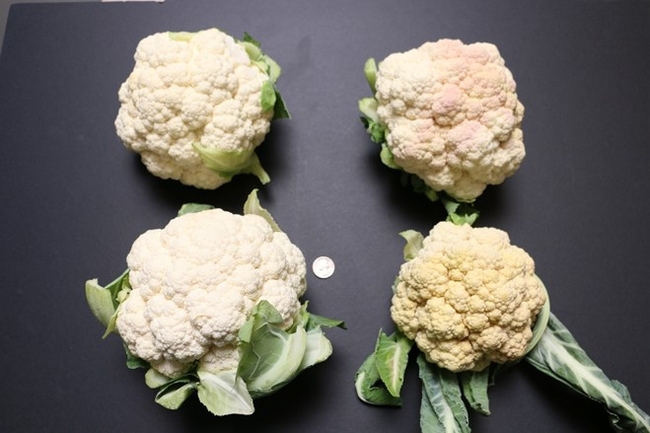
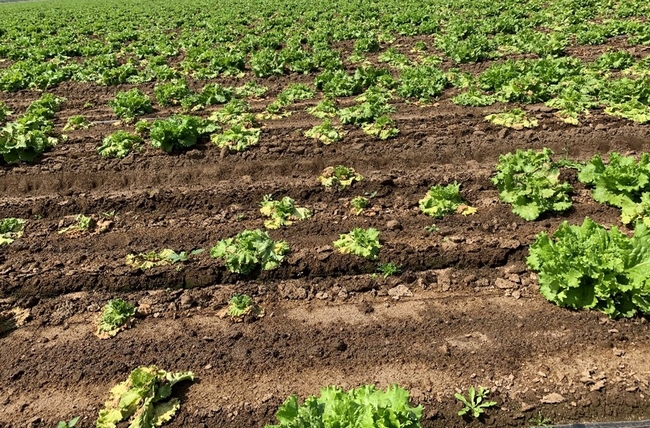
A previous article presented strategies for maximizing evapotranspiration rates to keep crops cool. Evapotranspiration (ET) is the process in which liquid water vaporizes from plant leaves and moist soil surfaces and is lost to the surrounding air. As liquid water vaporizes, heat is also lost from the surfaces of leaves and soil and from the surrounding air, which cools the crop. Assuring that crops have adequate soil moisture during the hottest period of the day (generally 11 am to 4 pm) can keep plants as cool as possible. Insufficient moisture to meet crop water requirements can result in stomates of the leaves closing and decrease transpiration rates. Limiting transpiration would raise leaf temperatures, potentially to temperatures greater than the surrounding air.
Hence, a good strategy to prevent heat damage to vegetable crops is to water fields that have not been recently irrigated. Also, keep in mind that during the last few days daily reference ET increased substantially due to the high air temperatures and so more water is needed than normal to replace the amount of moisture that crops transpiration. In South Salinas, for example, the CIMIS station showed that daily reference ET increased from 0.18 inches per day in late August to 0.25 inches per day during the heat wave, approximately a 40% increase in water demand (Fig. 8).
Irrigations do not need to be very long, as much as they should supply the crop with enough water to refill the soil profile to the depth of the root zone. Irrigating more frequently for less time would be a better strategy than irrigating less frequently for more time, since the soil has a limited capacity to store water in the root zone. Over-saturating the soil during high soil temperatures through heavy irrigations could worsen infections from soil-borne pathogens.
The CropManage online decision support tool can assist with determining the amount of water to apply and frequency to irrigate for most vegetable crops produced in the Salinas Valley. The software allows one to customize the recommendations for the development stage of the crop, soil type, and irrigation system characteristics.
Finally, for crops irrigated by sprinklers, short irrigations during the hottest time of the day can reduce air temperatures. This might be a good strategy for vegetables that are in a stage of development that is very susceptible for heat damage, such as cauliflower close to harvest.
